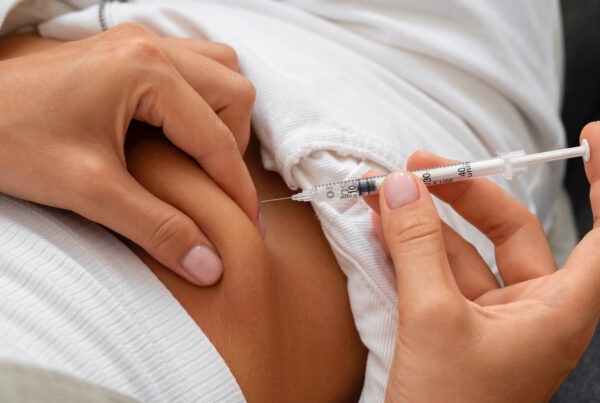In the double-blind clinical trial Double-blind, placebo-controlled, dose-ranging trial of intravenous ketamine as adjunctive therapy in treatment-resistant depression (TRD) by Fava et al. (2020), researchers sought to determine the most effective subanesthetic dose of intravenous ketamine for patients with treatment-resistant depression. The findings confirmed that the 0.5 mg/kg and 1.0 mg/kg doses were significantly more effective than lower doses or placebo, particularly in achieving rapid antidepressant effects.
Treatment-resistant depression (TRD) continues to challenge clinicians, often requiring innovative solutions beyond first-line pharmacological treatments. Ketamine, with its rapid-onset action and novel glutamatergic mechanism, offers a unique adjunctive option for patients who have not responded to conventional therapies. This study stands out by offering dose-specific evidence that guides practical clinical application.
Study Overview and Participant Selection
The randomized, placebo-controlled trial enrolled adult patients diagnosed with TRD, each of whom had previously failed to respond adequately to at least two standard antidepressant treatments. Patients were randomly assigned to receive varying doses of ketamine or placebo alongside their existing medication regimens.
The dosing arms included:
- Placebo (saline)
- Ketamine 0.1 mg/kg
- Ketamine 0.2 mg/kg
- Ketamine 0.5 mg/kg
- Ketamine 1.0 mg/kg
Infusions were administered in a controlled clinical setting, and patients were monitored for both therapeutic response and adverse effects.
Outcomes and Assessment Tools
Primary and secondary outcomes were measured using standardized psychiatric evaluation tools, including:
- Montgomery-Åsberg Depression Rating Scale (MADRS)
- Clinical Global Impressions (CGI)
- Self-reported mood scales
The most notable therapeutic gains were observed within 24 hours post-infusion, particularly in the 0.5 mg/kg and 1.0 mg/kg groups.
Key Findings: Dose-Dependent Response
- The 0.5 mg/kg and 1.0 mg/kg doses produced the most consistent and significant antidepressant effects, with patients reporting substantial relief of depressive symptoms as early as day one.
- Lower doses such as 0.1 mg/kg and 0.2 mg/kg did not demonstrate clinically meaningful efficacy compared to placebo.
- Across all groups, ketamine was well-tolerated, and adverse effects were mild and transient, mainly including dissociation or dizziness.
These results underscore the importance of selecting a dose within the effective range to ensure therapeutic benefits, especially during the critical early phase of treatment.
Clinical Implications
This trial offers key clinical guidance:
- 0.5–1.0 mg/kg remains the optimal range for rapid relief in TRD.
- Lower doses may be subtherapeutic and should be avoided unless clinically justified.
- Personalization is essential—some patients may respond better to higher doses, while others may require careful titration to minimize side effects.
Given the fast-acting nature of ketamine, especially at the 0.5 and 1.0 mg/kg levels, these findings support its use as a bridge treatment while longer-term strategies are implemented.
Limitations and Future Directions
While the trial successfully pinpointed effective dosing thresholds, several limitations warrant attention:
- Short duration of follow-up limits insights into long-term efficacy.
- Single-infusion model may not reflect outcomes of repeated dosing.
- Population diversity was limited; broader demographics could enhance generalizability.
Future research should explore maintenance protocols, relapse prevention, and potential biomarkers to guide individualized ketamine therapy.
Conclusion
The study Double-blind, placebo-controlled, dose-ranging trial of intravenous ketamine as adjunctive therapy in treatment-resistant depression (TRD) demonstrates that subanesthetic IV ketamine at 0.5–1.0 mg/kg is both safe and effective for patients with TRD. This dose range offers a reliable, fast-acting therapeutic option, providing meaningful symptom relief where standard antidepressants fall short. Personalized dosing and continued research will be key to optimizing treatment strategies.
References
- Fava M, Freeman MP, Flynn M, et al. Double-blind, placebo-controlled, dose-ranging trial of intravenous ketamine as adjunctive therapy in treatment-resistant depression (TRD). Mol Psychiatry. 2020;25:1592–1603. https://doi.org/10.1038/s41380-019-0531-0
- Krystal JH, Abdallah CG, Sanacora G. Ketamine: A Paradigm Shift for Depression Research and Treatment. Neuron. 2019;101(5):774–778.
- Murrough JW, Iosifescu DV, Chang LC, et al. Antidepressant efficacy of ketamine in treatment-resistant major depression: a two-site randomized controlled trial. Am J Psychiatry. 2013;170(10):1134–1142.
- Zarate CA, Singh JB, Carlson PJ, et al. A randomized trial of an NMDA antagonist in treatment-resistant major depression. Arch Gen Psychiatry. 2006;63(8):856–864.
- Berman RM, Cappiello A, Anand A, et al. Antidepressant effects of ketamine in depressed patients. Biol Psychiatry. 2000;47(4):351–354.




